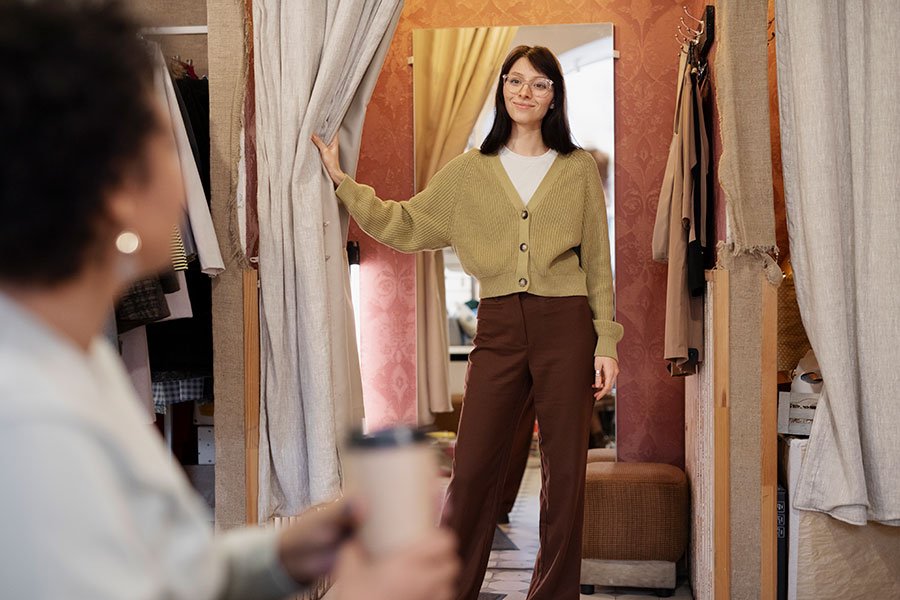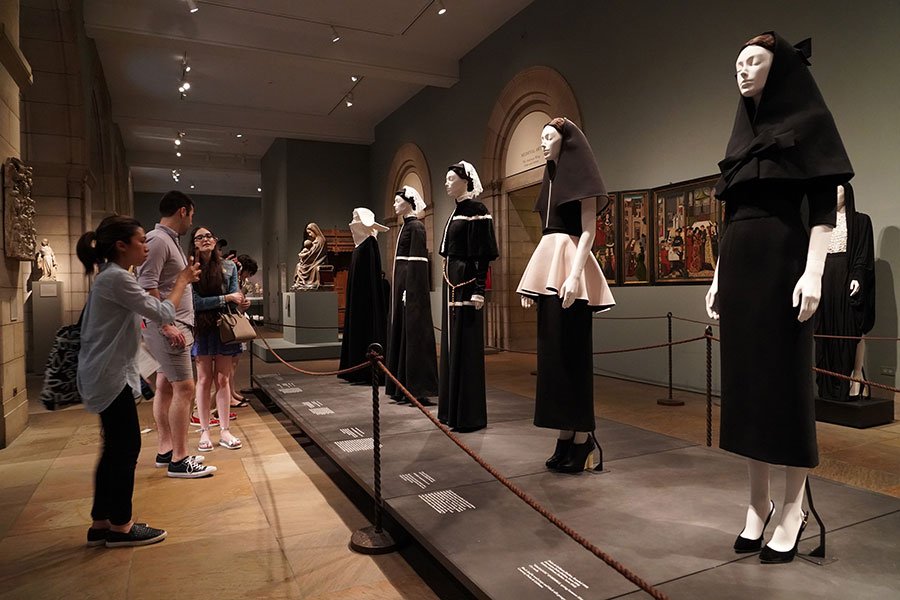Fashion is more than just clothing; it is a form of self-expression and a reflection of cultural, social, and economic factors. As a master fashion designer with decades of experience, I’ve witnessed firsthand how fashion shapes and is shaped by individuals and society. This article explores how fashion influences people, both men and women, and examines its profound effects on personality, behavior, social interactions, and commerce.
The Influence of Fashion on Personality and Behavior
Fashion plays a significant role in shaping an individual’s personality and behavior. The clothes we wear and the styles we adopt can affect how we perceive ourselves and how others perceive us.
- Self-Expression: Fashion allows individuals to express their identity, tastes, and preferences. Through clothing, accessories, and hairstyles, people communicate their personality, beliefs, and mood. For instance, someone who wears bold, vibrant colors might be perceived as confident and outgoing, while someone who prefers neutral tones might be seen as more reserved.
- Confidence and Self-Esteem: The right outfit can significantly boost a person’s confidence and self-esteem. When people feel good about what they are wearing, it enhances their mood and behavior. This is especially true in professional settings, where dressing well can lead to greater confidence in one’s abilities and interactions.
- Social Roles and Norms: Fashion can also influence behavior by reinforcing social roles and norms. Different cultures and societies have specific dress codes for various occasions and roles. Adhering to these norms can provide a sense of belonging and acceptance, while deviating from them can signal rebellion or non-conformity.
- First Impressions: Fashion heavily influences first impressions. People often make snap judgments based on appearance, and clothing is a significant part of that assessment. This can affect social and professional interactions, where making a positive first impression can open doors and create opportunities.
Gender Differences in Fashion Influence
While fashion influences both men and women, there are distinct differences in how it impacts each gender.
- Men and Fashion: Historically, men’s fashion has been more conservative compared to women’s. However, in recent years, there has been a shift towards more expressive and varied styles for men. Fashion allows men to break traditional norms and explore different aspects of their identity. For instance, the rise of streetwear and casual chic has given men more options to express individuality and creativity.
- Women and Fashion: Women’s fashion has always been more dynamic and diverse. It allows women to explore different facets of their personality and adapt to various social and professional contexts. Fashion can empower women by providing them with tools to express confidence, femininity, strength, and independence.
Fashion’s Influence on Social Interactions
Fashion is a powerful tool for social interaction and communication. It can facilitate connections, convey messages, and influence how we interact with others.
- Social Status and Group Identity: Fashion can signal social status and group identity. High-end designer labels and exclusive brands are often associated with wealth and social standing. On the other hand, subcultures and communities use fashion to create a sense of belonging and differentiate themselves from mainstream culture.
- Cultural Communication: Fashion is a form of cultural communication. It reflects cultural heritage, traditions, and values. For example, traditional attire worn during cultural festivals or ceremonies communicates respect for one’s heritage and a connection to cultural roots.
- Influence of Social Media: Social media has revolutionized how fashion influences social interactions. Platforms like Instagram and TikTok have made fashion more accessible and interactive. Influencers and celebrities set trends that followers quickly adopt, creating a global dialogue around fashion.
The Role of Fashion in Business and Commerce
Fashion is a major driver of the global economy. It influences trade, commerce, and marketing strategies.
- Economic Impact: The fashion industry is a multi-billion-dollar global industry that employs millions of people. From high-end luxury brands to fast fashion, the industry drives economic growth, innovation, and job creation. Fashion weeks, trade shows, and fashion events contribute significantly to local economies.
- Marketing and Propaganda: Fashion is a powerful tool for marketing and propaganda. Brands use fashion to create desirable lifestyles and aspirations. Advertisements and fashion campaigns often tap into cultural and social trends to influence consumer behavior. This can be seen in the way brands promote sustainability, body positivity, and diversity through their marketing efforts.
- E-Commerce and Technology: The rise of e-commerce has transformed the fashion industry. Online shopping platforms and digital marketing have made fashion more accessible to a global audience. Technology, such as virtual try-ons and AI-driven personalization, has enhanced the shopping experience and allowed brands to connect with consumers in innovative ways.
The Evolution of Fashion Over Time and Venues
Fashion is constantly evolving, influenced by changes in society, culture, and technology. Different venues and times in history have seen distinct fashion trends that reflect the era’s values and norms.
- Historical Fashion Trends: Each historical period has had its unique fashion trends, often influenced by significant events and cultural shifts. For instance, the roaring twenties were characterized by flapper dresses and a sense of liberation, while the forties saw more practical and conservative styles due to World War II.
- Modern Trends: Today’s fashion is influenced by a blend of past styles, current events, and technological advancements. The rise of sustainable fashion reflects growing environmental awareness, while digital fashion and virtual clothing are emerging trends driven by technology.
- Global Influence: Globalization has brought a mix of cultural influences into fashion. Designers draw inspiration from diverse cultures, creating a global fusion of styles. This has led to more inclusive and diverse fashion trends that resonate with a broader audience.
- Venue-Specific Fashion: Fashion also changes depending on the venue and occasion. For instance, the fashion seen at a high-end gala will differ significantly from street fashion or festival wear. Each venue demands a different style, influencing how individuals dress and present themselves.
Fashion’s Impact on Society
Fashion has a profound impact on society, shaping cultural norms, values, and behaviors.
- Cultural Representation: Fashion is a powerful tool for cultural representation. It allows individuals and communities to celebrate their heritage and traditions. Designers often use fashion to tell stories and highlight social issues, contributing to cultural awareness and understanding.
- Social Movements: Fashion has played a significant role in social movements. The feminist movement, for example, saw the adoption of trousers by women as a symbol of gender equality. Similarly, fashion has been used to promote body positivity, racial equality, and LGBTQ+ rights.
- Environmental Impact: The fashion industry has a significant environmental footprint. The rise of fast fashion has led to increased consumption and waste. However, there is a growing movement towards sustainable fashion, with designers and brands focusing on eco-friendly materials, ethical production practices, and circular fashion.
- Economic Disparities: Fashion can highlight economic disparities. The divide between luxury fashion and affordable clothing reflects broader economic inequalities. However, fashion also has the potential to democratize style, with trends and innovations trickling down from high-end to mass-market fashion.
Conclusion
Fashion is a dynamic and multifaceted force that influences individuals and society in profound ways. It shapes personality, behavior, social interactions, and cultural norms. While fashion trends come and go, the underlying influence of fashion on our lives remains constant. As we navigate the ever-changing landscape of fashion, it is essential to recognize its power and use it as a tool for positive expression, cultural representation, and social change. Whether through the clothes we wear, the styles we adopt, or the brands we support, fashion allows us to communicate who we are and what we stand for. By embracing the diverse and inclusive nature of fashion, we can create a more connected and understanding world.











